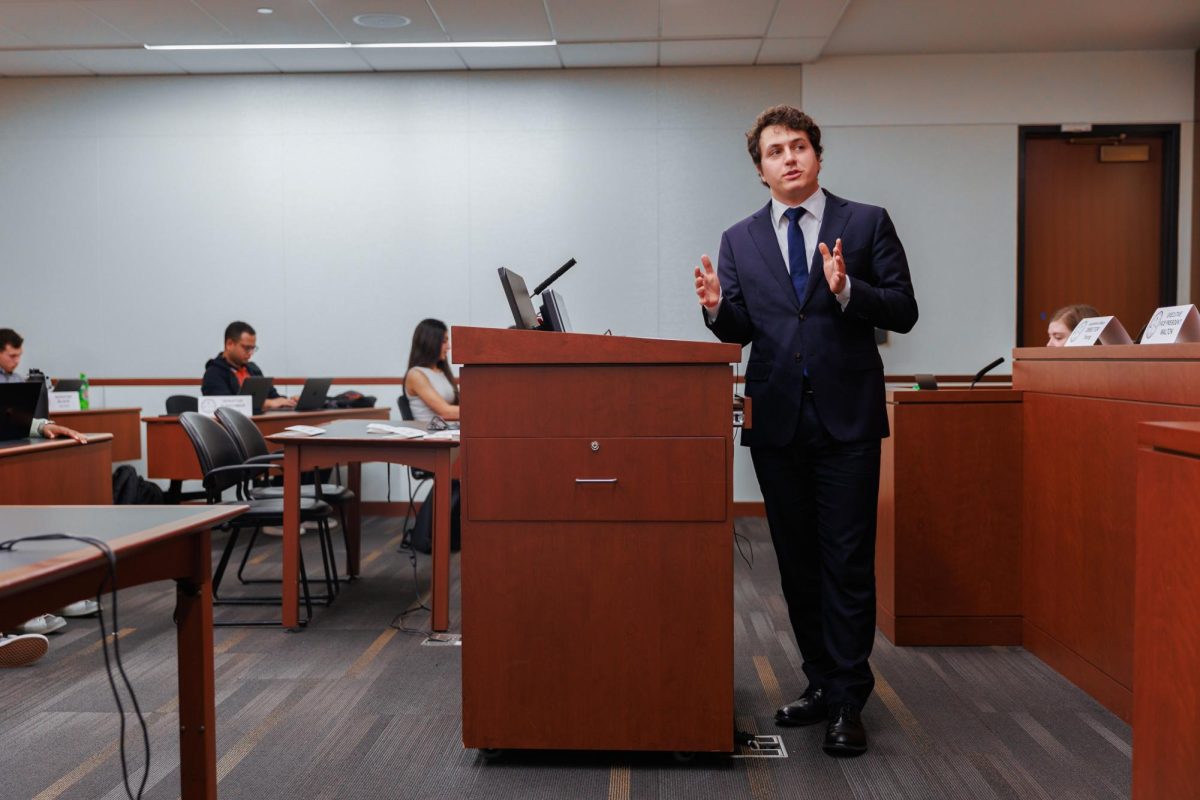Max Romano wanted to be a computer engineer. He liked technology in high school and did well on his science exams.
But within a year of coming to GW, he had changed his mind.
Discouraged by the required lecture-style science and math classes, Romano switched his major before taking a single computer science course. In his move to the GW School of Business, the sophomore sought classes with more interaction and in-depth conversations.
“It didn’t really have to do with the perceived difficulty. I just realized I didn’t want to continue with that [major] here,” Romano said. “So I was like, well I’ll switch my majors like everyone else does.”
Romano is part of a larger group of students who drop science, technology, engineering and math majors to pursue either easier or more discussion-based degrees – a trend that threatens the nation’s ability to stay competitive in scientific innovation.
Across the U.S., 40 percent of students who start as engineering or science majors eventually switch to other subjects or fail out, according to a 2010 study by the University of California at Los Angeles. The drop-off rate climbs to 60 percent for pre-med students.
The number of full-time students who entered the School of Engineering and Applied Science as freshmen and then left for another school at GW increased four-fold from 2006 to 2010, according to data from the Office of Institutional Research.
Almost 10 percent of the total freshman class in SEAS during 2006 transferred out of the program during their four years at GW. For the freshman SEAS class that entered last year, about 28 percent of students have already transferred to another school.
Statistics on transfers by science and math majors in the Columbian College of Arts and Sciences is not tracked.
Howard Davis, director of undergraduate student services and advising at the engineering school, said attrition from engineering programs is not just an issue at GW but a national one, adding that the school has been “very diligent in addressing this issue.”
To combat the drop-off rate, Davis said the school uses a combination of professional and faculty advisers to guide freshmen as they progress through degree programs.
Davis attributed the struggle for science, technology, engineering and math majors during their first year at school to the required introductory classes that do not meet their expectations.
“I think, going into the major, students have the tendency to underestimate the amount of prep and focus that it takes to succeed in that major,” Davis said. “When they start doing the course work and the math and science fundamentals, they have a hard time connecting these fundamentals with being a scientist or building a bridge.”
Other students say it is the way that course material is presented that dissuades them from continuing in a science, technology, engineering or mathematics field.
“I felt that, if biology and pre-med were truly what I wanted to do with my life, I should be enjoying the classes despite their difficulty, but this just was not happening for me,” sophomore Danielle Leslie, who now studies psychology, said. “I felt overwhelmed and discouraged. I did not enjoy the lectures; labs were fun, but they were not enough to keep me committed.”
The University is targeting science, technology, engineering and math students by pairing all freshmen with upperclassmen of the same major to provide a mentor if freshmen feel overwhelmed. Free walk-in tutoring is also offered to SEAS students for math, chemistry and physics classes within the school.
“I think the fact that the engineering school is a really small school is really helpful to students,” Caroline Battey, a senior majoring in civil engineering, said. Battey, who is president of the engineering sorority Alpha Omega Epsilon, said that experience “definitely tagged me to stay in and offered a support system.”
GW also offers students monetary incentives in the form of lofty scholarships.
Internal data from GW show that 91.1 percent of students entering SEAS received financial aid in 2010. In addition, an engineering-specific $16,000- to $20,000-scholarship is offered through the University-wide Presidential Academic Scholarship program.
This incentive for science, technology, engineering and math majors, Davis said, is the reflection of a growing need for scientists to keep the U.S. competitive.
“As a nation, we need people with those skill sets. Personally, I see it as an obligation to encourage students to do these majors because we are falling behind other countries to produce engineers and scientists.”






